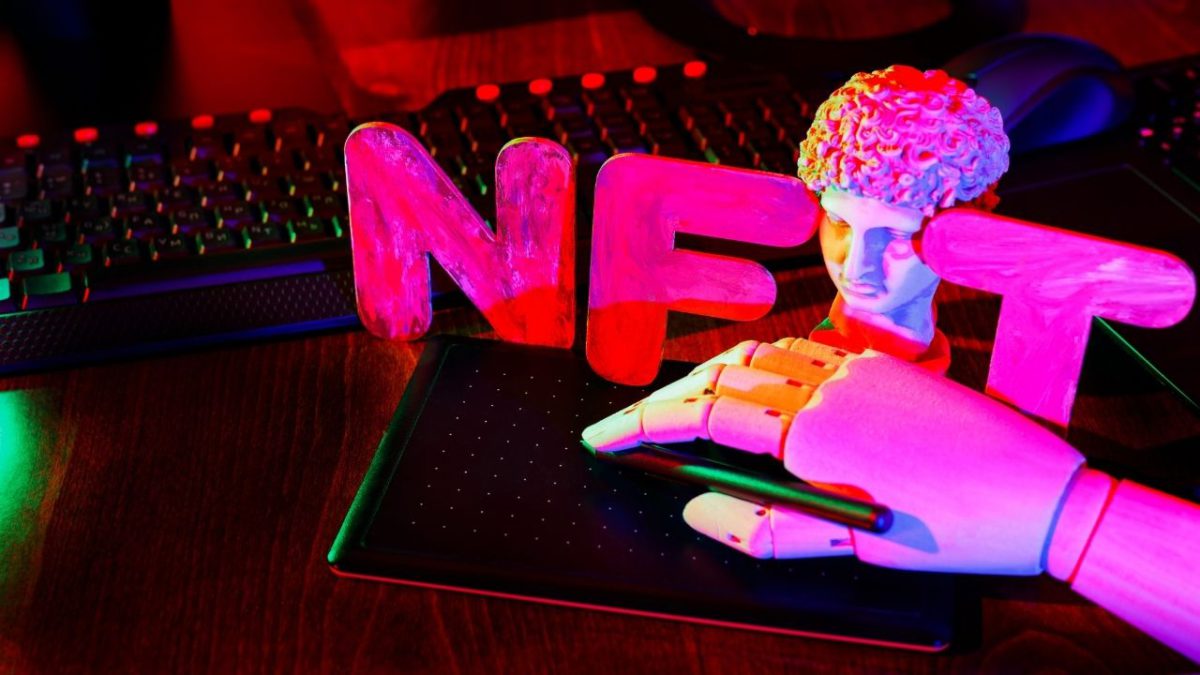Technologies That Support Metaverse, Web 3.0, And NFTs
Data abounds in our world, yet it does not belong to us. Governments, for instance, keep tabs on voter information and land ownership records. Like this, private businesses track and profit from our online digital footprints. Search engines and social networking websites must have caught your attention. They can entice you to click on them by displaying sponsored content and goods. This is intentional. Therefore, those who share their personal or professional information do not obtain ownership of our data. People and data will be free thanks to NFTs, Web 3.0, and other technologies that power the metaverse.
We must ask ourselves, “How did we get here?” as our first inquiry. What has changed in internet technology over the past 30 years? What accounts for the rise to dominance of electronic communication and information sharing? The physical economy is built on the ownership of both private and public lands. Political governance’s pillars are represented by industries, capitalists, and labor. So why are Web 3.0, NFTs, and other technologies that support the metaverse the future? Let’s investigate.
Adoption of mobile internet and electricity
The most important concept to grasp is the spread of electrical technology. For instance, industrial use took another 30 years after the construction of electric power plants in the late 19th century. Everyone believes that electricity arrived when Thomas Edison obtained the patent for electric light. This is not at all the case. Like every new technology, electricity had its fair share of doubters and pessimists. Only after the 1920s did the technology becomes widely used.
The internet is a software phenomenon similarly. It wasn’t until major cities had access to hardware component manufacturers and telecommunications infrastructure. We link the introduction of the iPhone to mobile internet. But since the 1990s, we have known about mobile devices. Recall Motorola, Nokia, and Blackberry. The 1990s saw the rise of Web 1.0. Similar to how mobile internet led to widespread Web 2.0 adoption. This is the era of platform businesses, social media, and e-commerce. Approximately 4 billion people utilize the internet worldwide now. Web 3.0 has arrived. It debuted in 2009 together with the Bitcoin whitepaper.
The technology supporting the Metaverse, Web 3.0, and NFTs
We now have a clearer knowledge of how technology adoption works. Technology advancement has a significant impact on social dynamics and human civilization. Since people become accustomed to new routines, it completely rewires lifestyles. Over time, technology helps children understand. For instance, the current internet won’t be replaced by the Metaverse. Instead, it will enhance and improve the online experience. People will discover novel uses for the internet that we can’t even imagine now. So let’s start learning about NFTs, Web 3.0, and the technologies that make up the Metaverse.
Hardware
Your mobile data, as an illustration. Most internet traffic is carried by physical infrastructure that is fixed. Every city and town has mobile towers built by telecom providers. Similar to this, enormous undersea cables are used to carry data throughout the globe. Remember when you had to physically connect your PC to a broadband connection using ethernet cables and local phone lines? That is internet hardware, yes. The same goes for switches, routers, and modems. Our phones and PCs now have access to the internet thanks to significant investment. The metaverse will therefore need the same. Consider technologies such as 5G and higher, GPUs, VR/AR-capable hardware, high-quality industrial cameras, tracking systems, and scanning sensors.
Computing and networking
Most people don’t seem to be known these two technologies that power the Metaverse. What we can and cannot build will depend on their importance. The three components of networking are bandwidth, latency, and dependability. The quantity of data we send in a given time is known as bandwidth. Because the metaverse is so immersive, we require much more bandwidth than we do for current applications. For instance, most information is already on our phones when we stream games, but the games provide positional information through the internet. Hence, we are aware of the download and installation times.
The time it takes for data to travel from one location to another is called latency. It is the most challenging problem to address in terms of metaverse applications. Applications for the metaverse, for instance, combine social and technological aspects. This implies that any delay in the application experience will reduce user satisfaction. Many people find it frustrating that their films take so long to load. Consider how the metaverse will only increase this frustration. For instance, 5G significantly lowers latency compared to 4G. The biggest computational requirements in human history will be needed for the metaverse. Blockchain technology makes decentralized storage and computing scalable by making all unused hardware space accessible for sale.
Combining Web 3.0, NFTs, and Metaverse technologies in The Platforms
People desire to complete tasks at the end of the day. Everybody wants to be alive, in love, socialize, have fun, and make money. Therefore, how can NFTs, Web3.0, and the technologies supporting the Metaverse accomplish this? The dominant social networking and search players are now Web 2.0 behemoths like Facebook and Google. Platforms that assist people and organizations in completing tasks as quickly as possible will grow in popularity. In actuality, this will surpass all technical advancements in size. People are more motivated once they access in-application things such as NFTs. People will put in the most effort on the tasks they care about.
Also, read – Top 4 Copyright Essentials For Everyone In NFT world
Conclusion
A significant change in our socioeconomic lives is only getting started. Physical frontiers no longer have as much significance as they once did. Thanks to the internet, global talent and skills now compete on an even playing field. People must take the initiative to grasp how the world is transitioning to this future and act as quickly as they can. The technologies enabling the metaverse, such as NFTs and Web 3.0, will alter how we perceive the world.
Stay informed with daily updates from Blockchain Magazine on Google News. Click here to follow us and mark as favorite: [Blockchain Magazine on Google News].
Get Blockchain Insights In Inbox
Stay ahead of the curve with expert analysis and market updates.
latest from tech
Disclaimer: Any post shared by a third-party agency are sponsored and Blockchain Magazine has no views on any such posts. The views and opinions expressed in this post are those of the clients and do not necessarily reflect the official policy or position of Blockchain Magazine. The information provided in this post is for informational purposes only and should not be considered as financial, investment, or professional advice. Blockchain Magazine does not endorse or promote any specific products, services, or companies mentioned in this posts. Readers are encouraged to conduct their own research and consult with a qualified professional before making any financial decisions. The featured image used is just a creative depiction of the title and it does not intend to hurt sentiments of any person or institution. If it hurts anyone sentiments, please do not hesitate to reach out to Blockchain Magazine.

 Bitcoin
Bitcoin  Ethereum
Ethereum  XRP
XRP  Tether
Tether  Solana
Solana  USDC
USDC  Dogecoin
Dogecoin  Cardano
Cardano  Lido Staked Ether
Lido Staked Ether  TRON
TRON  Chainlink
Chainlink  Wrapped Bitcoin
Wrapped Bitcoin  Wrapped stETH
Wrapped stETH  Avalanche
Avalanche  Sui
Sui  Stellar
Stellar  Hedera
Hedera  Toncoin
Toncoin  Shiba Inu
Shiba Inu  LEO Token
LEO Token  Hyperliquid
Hyperliquid  Litecoin
Litecoin  Bitget Token
Bitget Token  WETH
WETH  USDS
USDS  Polkadot
Polkadot  Bitcoin Cash
Bitcoin Cash  Ethena USDe
Ethena USDe  Wrapped eETH
Wrapped eETH  Uniswap
Uniswap  MANTRA
MANTRA  Ondo
Ondo  Pepe
Pepe  Aave
Aave  Monero
Monero  NEAR Protocol
NEAR Protocol  WhiteBIT Coin
WhiteBIT Coin  Mantle
Mantle  Official Trump
Official Trump  Aptos
Aptos  Dai
Dai  Internet Computer
Internet Computer  Ethereum Classic
Ethereum Classic  Bittensor
Bittensor  Cronos
Cronos  OKB
OKB  POL (ex-MATIC)
POL (ex-MATIC)  Gate
Gate 




